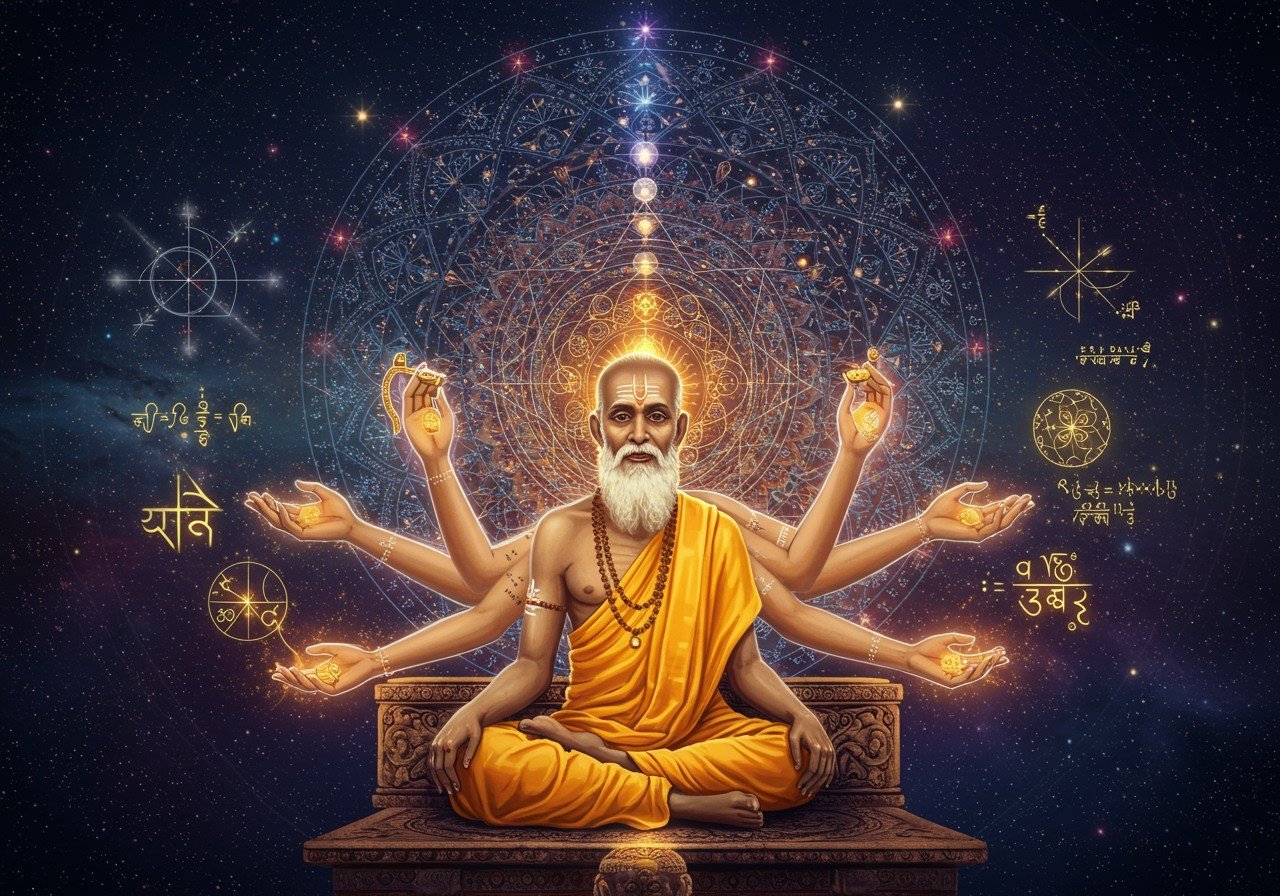
India’s rich history in mathematics stands as a testament to its profound intellectual achievements. From the ancient Indus Valley Civilization to the sophisticated works of medieval scholars, Indian mathematics has significantly shaped global mathematical understanding. This article delves into this legacy, highlighting key contributors and their impact.
Ancient Beginnings: Indus Valley Civilization (circa 3300–1300 BCE)
The Indus Valley Civilization provides the earliest evidence of mathematical practice in India. Discoveries such as weights, measures, and standardized brick sizes reveal a deep understanding of geometry and arithmetic, essential for trade, construction, and daily life.
- Binary weights and decimal system: These early methods, showcasing the civilization’s mathematical prowess, laid the groundwork for later advancements in mathematical systems.
- Urban planning: The advanced layouts of cities like Mohenjo-Daro and Harappa necessitated precise calculations, demonstrating a practical application of mathematical knowledge in urban development.
Vedic Mathematics: Literature and Sutras (circa 1500–500 BCE)
During the Vedic period, mathematical concepts were documented in ancient texts like the Sulbasutras. These texts provide insights into the mathematical thinking of the time and demonstrate the integration of mathematics into religious practices.
- Sulbasutras: These texts provided rules for constructing altars, demonstrating early geometric principles and their application in religious rituals.
- Large numbers and infinity: Vedic literature explored concepts of large numbers and infinity, pushing the boundaries of mathematical thought and laying the foundation for later advancements in these areas.
- Decimal place value system: The development of the decimal place value system, a cornerstone of modern mathematics, emerged during this period, showcasing the sophisticated understanding of numerical representation.
Classical Period: The Golden Age (400–1200 CE)
From 400 CE to 1200 CE, Indian mathematics flourished, marked by significant contributions from renowned scholars. This era witnessed groundbreaking advancements that shaped the course of mathematical history.
- Aryabhata (476–550 CE): Known for approximating π, introducing the concept of zero, and further developing the place value system, Aryabhata’s work revolutionized mathematical calculations and laid the foundation for future discoveries.
- Brahmagupta (598–668 CE): Brahmagupta developed rules for arithmetic with zero and negative numbers, expanding the scope of mathematical operations and paving the way for more complex algebraic manipulations.
- Bhaskara II (1114–1185 CE): Bhaskara II made substantial contributions to algebra and calculus, further advancing these fields and solidifying India’s position as a leading center of mathematical innovation. A period of relative stagnation followed his work.
- Varāhamihira (505–587 CE): Varāhamihira made significant contributions to trigonometry and astronomy, developing important trigonometric functions and refining astronomical calculations.
Medieval Advances: Kerala School (14th–16th centuries)
The Kerala School of Mathematics, emerging in the 14th century, made remarkable strides in calculus, predating European advancements. This school pushed the boundaries of mathematical exploration and left a lasting impact on the field.
- Madhava of Sangamagrama (1340–1425 CE): Madhava developed infinite series expansions for trigonometric functions, a groundbreaking achievement that paved the way for modern calculus.
- Infinite series and limits: The Kerala School innovatively approached complex problems involving infinite series and limits, demonstrating a deep understanding of these concepts and their applications.
Later scholars like Nilakantha Somayaji (1444–1544 CE) and Jyeshthadeva (c. 1500–1610 CE) continued this tradition, building upon Madhava’s work and further developing the field of calculus.
Mathematics in Indian Culture and Religion
Mathematics in India has always been deeply intertwined with cultural and religious practices. This integration demonstrates the practical application of mathematical principles in various aspects of life.
- Temple architecture: The use of geometry in designing temples, such as those in Khajuraho, showcases intricate designs reflecting mathematical precision and a deep understanding of geometric principles.
- Yantras: These geometric designs, used in meditation and rituals, symbolize spiritual concepts through mathematical patterns, highlighting the connection between mathematics and spirituality.
- Astrology and astronomy: Calculations used to determine auspicious dates and times for events blend mathematics with daily life and traditions, demonstrating the practical application of mathematical knowledge in cultural practices.
Indian art, music, and literature also reflect mathematical influences. Traditional dance forms often incorporate rhythmic patterns based on mathematical principles, further showcasing the pervasive influence of mathematics in Indian culture.
Poojn.in: Supporting Your Journey into Indian Culture and Mathematics
Poojn.in, India’s largest online store for cultural goods and services, offers a wide selection of products to connect with India’s rich mathematical and spiritual heritage. Explore our collection of:
- Traditional Mala Beads: Used for counting mantras and in various meditative practices, these beads can enhance your spiritual journey.
- Sacred Geometry Items: Discover yantras and other items representing sacred geometric principles, connecting you with the spiritual significance of mathematical forms.
- Educational Resources: Explore books and other resources on Vedic mathematics and its applications, deepening your understanding of this ancient system.
Visit Poojn.in today to discover a wide array of products that honor India’s rich cultural and mathematical traditions.
Conclusion
The legacy of Indian mathematics is a testament to India’s intellectual and cultural richness. From ancient discoveries to medieval advancements, Indian mathematicians have shaped the world of mathematics and left an enduring impact on various fields. By exploring and celebrating this heritage, we gain a deeper appreciation for the profound contributions of Indian mathematicians to our world.


